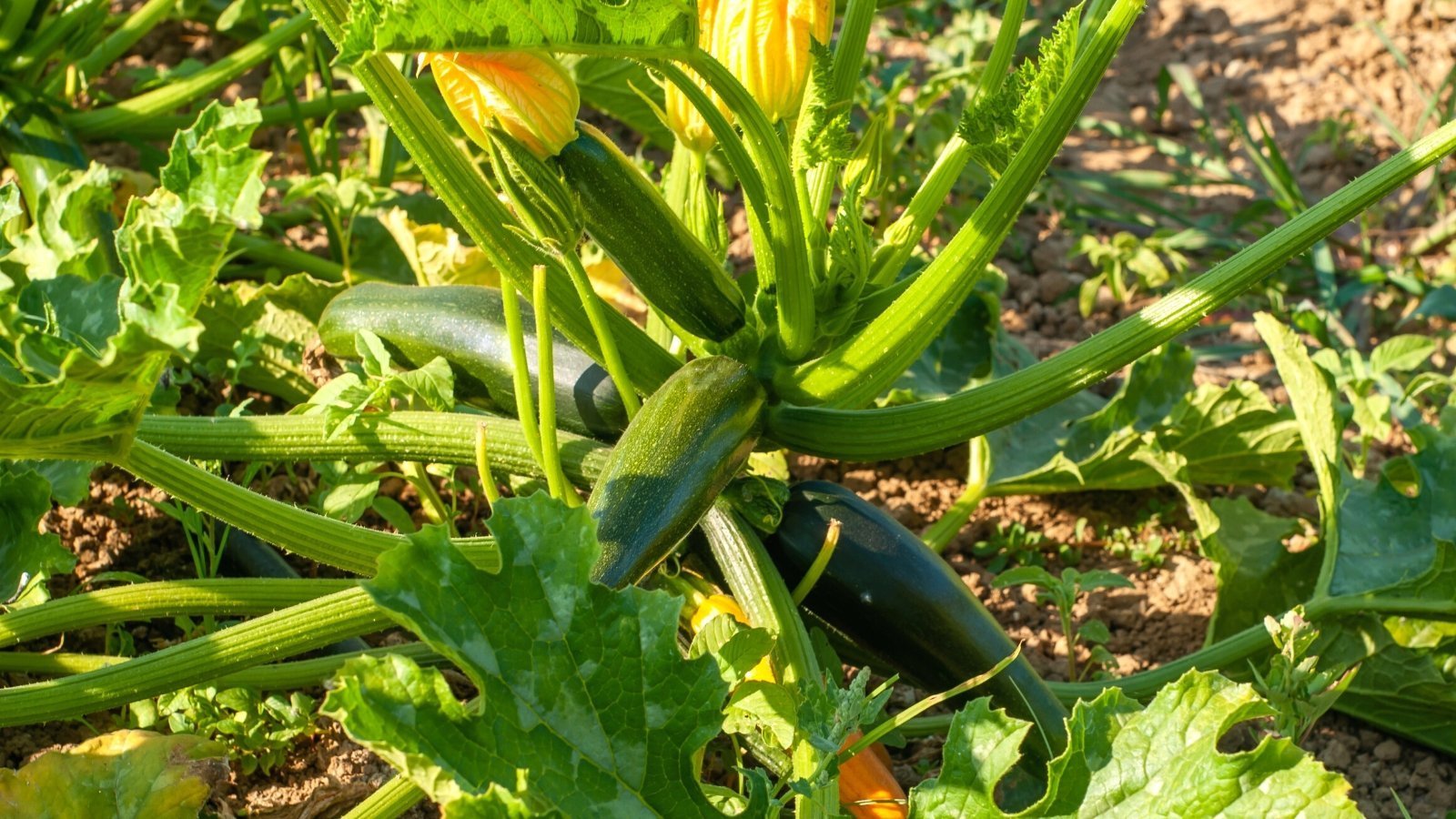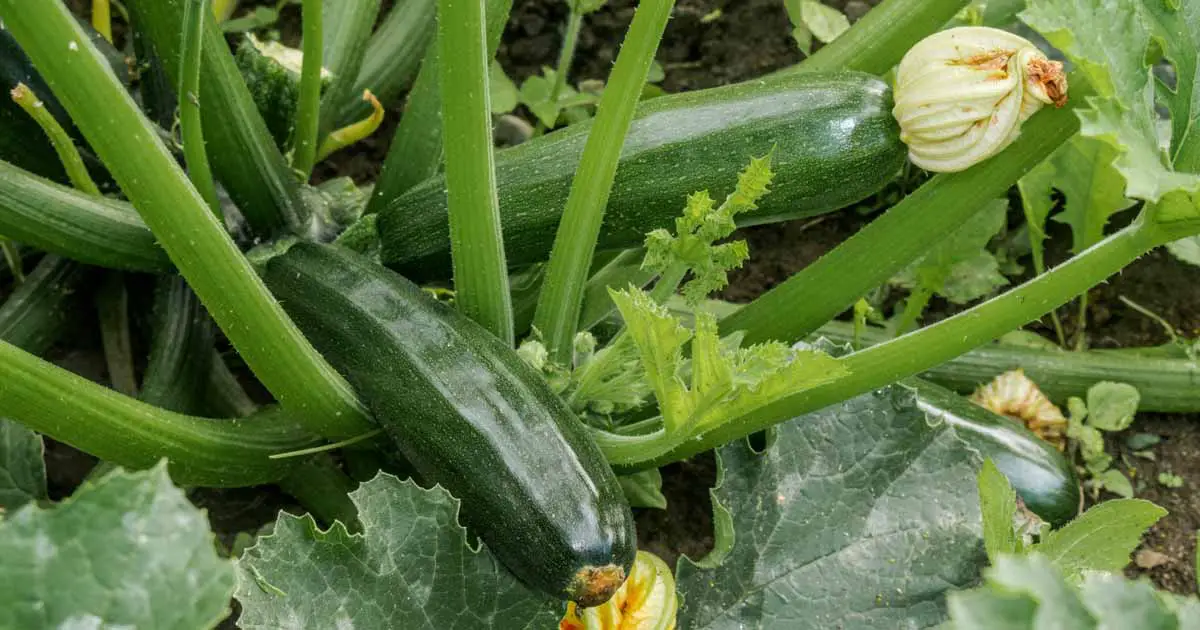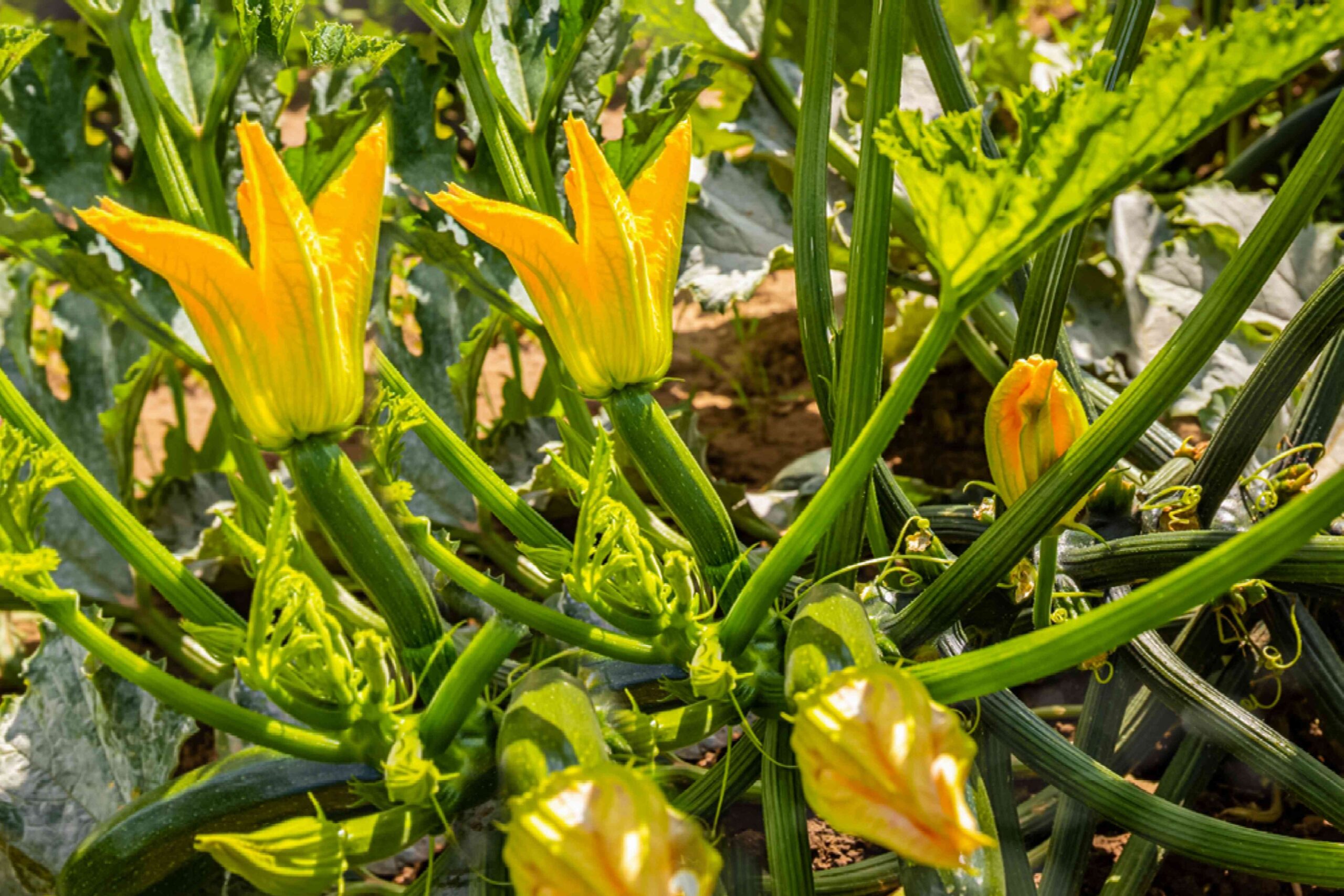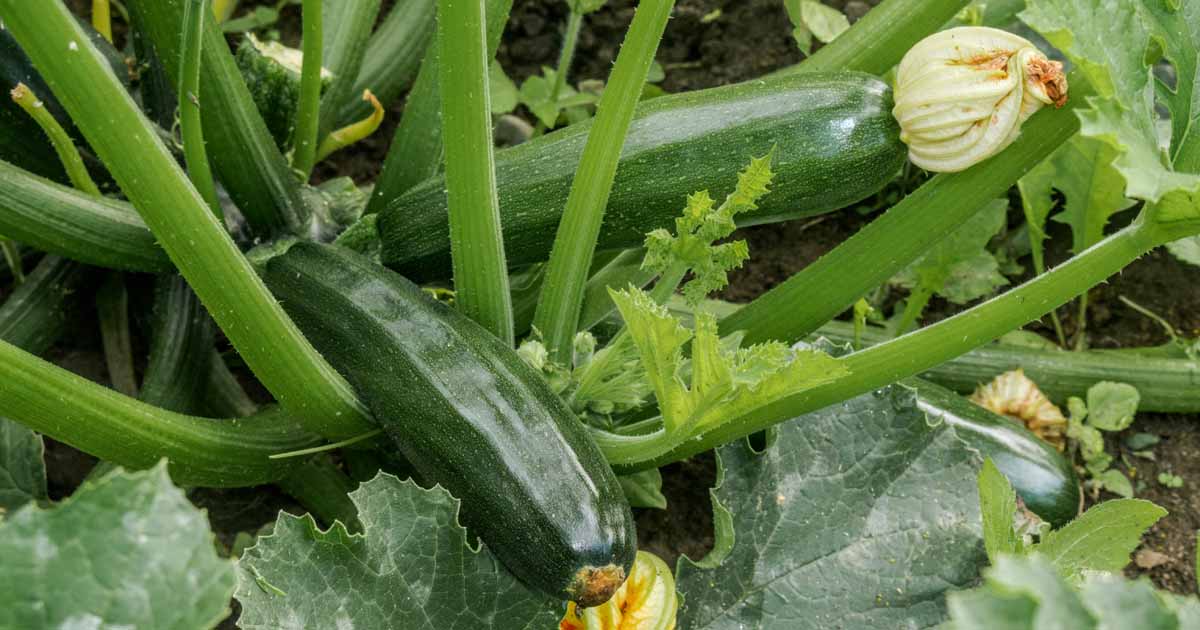Imagine stepping into a flourishing vegetable garden, with vibrant greens stretching as far as the eye can see. In this enchanting setting, you find yourself drawn to a particular plant, its slender leaves reaching towards the sky. Curiosity piques within you as you wonder, what does zucchini look like growing? As you continue reading this article, prepare to embark on a delightful journey exploring the appearance of zucchini as it flourishes in the garden, replete with its distinctive shape, color, and growth patterns.
Plant Description
Stem
The stem of a zucchini plant is sturdy and cylindrical, with a vibrant green color. It serves as the main support structure for the plant, enabling it to stand upright and bear the weight of the leaves, flowers, and fruits. As the zucchini plant grows taller, it develops a slightly rough texture on the stem and small ridges. These features contribute to the overall hardiness and resilience of the plant.
Leaves
Zucchini leaves are large and heart-shaped, with a deep green color. They grow alternately along the stem and have a slightly rough texture on the upper surface. The veins on the leaves are prominent and provide an efficient transport system for nutrients and water throughout the plant. The leaves play a crucial role in the process of photosynthesis, converting sunlight into energy that fuels the growth and development of the zucchini plant.
Flowers
Zucchini flowers are vibrant and eye-catching, adding a touch of beauty to the garden. They come in two varieties: male and female. Male flowers are typically larger and showier, with long stems and a single stamen in the center. Female flowers, on the other hand, have a small swollen base that resembles a miniature zucchini. These flowers are essential for pollination and the subsequent formation of fruits. Zucchini flowers have a delicate fragrance and attract pollinators like bees and butterflies.
Fruits
The fruits of the zucchini plant are the star of the show. They are typically harvested when they are young and tender, before they grow too large and become tough. Zucchini fruits have a cylindrical shape, ranging in size from small to large, depending on the variety. The skin is smooth, glossy, and varies in color from dark green to light green or even yellow. The flesh of the zucchini is pale white or greenish-white with small seeds scattered throughout. Zucchini fruits are known for their mild flavor and versatile culinary uses.
Planting and Growing Zucchini
Selecting a Location
When choosing a location to plant zucchini, it is important to prioritize sunlight. Zucchini plants require a minimum of 6 to 8 hours of direct sunlight each day for optimal growth. Additionally, the soil should be well-draining to prevent waterlogged conditions that can lead to root rot. Consider planting zucchini in a spot that offers protection from strong winds, as excessive wind can damage the plants. Lastly, ensure there is enough space for the zucchini plants to spread out, as they can become quite large.
Preparing the Soil
Before planting zucchini seeds, it is crucial to prepare the soil properly. Start by removing any weeds, rocks, or debris from the area. Loosen the soil using a garden fork or tiller to improve its texture and promote good drainage. Incorporate organic matter such as compost or well-rotted manure into the soil to enrich it with nutrients. A pH level between 6 and 7 is ideal for zucchini plants, so adjust the soil acidity if necessary.
Planting Seeds
Zucchini seeds can be directly sown into the garden once the soil temperature reaches around 60°F (15°C). Dig a small hole about an inch deep and place two or three seeds in it. Cover the seeds with soil and gently firm the ground to ensure good seed-to-soil contact. Space the planting holes about 2 to 3 feet apart to allow ample room for the zucchini plants to grow and spread. Water the area thoroughly after planting, keeping the soil consistently moist throughout the germination period.
Watering
Zucchini plants need regular watering, especially during hot, dry weather. Aim to provide about 1 to 1.5 inches of water per week, either through rainfall or irrigation. It is essential to keep the soil consistently moist but not waterlogged, as excessive moisture can lead to root rot and other diseases. Water deeply at the base of the plants, avoiding overhead watering that can encourage the spread of fungal diseases. Mulching around the plants can help retain moisture and reduce evaporation.
Mulching
Mulching around zucchini plants offers numerous benefits. A layer of organic mulch, such as straw or wood chips, helps regulate soil temperature, conserves moisture, prevents weed growth, and protects the shallow roots of the plants. Apply a generous layer of mulch around the base of each plant, leaving a small space around the stem to prevent the risk of rot. Mulch should be replenished as needed to maintain a thickness of around 2 to 3 inches.
Fertilizing
To promote healthy growth and abundant fruit production, it is important to fertilize zucchini plants. Before planting, incorporate a balanced fertilizer into the soil according to the package instructions. As the plants grow, supplemental feeding can be beneficial. Use a fertilizer high in nitrogen during the early stages of growth to encourage leaf development, then switch to a fertilizer higher in phosphorus and potassium to promote flower and fruit formation. Follow the recommended application rates and timing on the fertilizer packaging.
Supporting the Plants
While zucchini plants have sturdy stems, providing support can be beneficial, particularly when growing larger varieties or in areas prone to strong winds. Install stakes or trellises near the plants early in the growing season to prevent them from sprawling on the ground. This promotes good air circulation, reduces the risk of diseases, and makes harvesting easier. Secure the stems gently using soft ties or plant clips, being careful not to damage or restrict their growth.

Lifecycle of Zucchini
Germination
The life cycle of a zucchini plant begins with seed germination. After planting, the seeds absorb water and swell, initiating the germination process. Under the right conditions of warmth and moisture, the seed coat splits, and a small root called the radicle emerges. The radicle grows downward, anchoring the plant into the soil, while a shoot emerges above the ground.
Seedling Stage
Once the zucchini seed germinates, it enters the seedling stage. At this point, the shoot continues to elongate, and the first leaves, called cotyledons, unfold. These initial leaves provide nutrients to sustain the young plant until it can develop true leaves. The seedling stage usually lasts for a few weeks, during which the plant establishes a strong root system and prepares for rapid growth.
Vegetative Stage
During the vegetative stage, the zucchini plant focuses on leaf production and overall growth. True leaves begin to emerge, replacing the cotyledons. The plant’s roots continue to develop, allowing it to absorb water and nutrients from the soil more efficiently. The main stem elongates, and lateral branches start to form. The zucchini plant utilizes the energy obtained from sunlight and nutrients to expand its foliage and strengthen its structure.
Flowering Stage
As the zucchini plant matures, it enters the flowering stage. At this point, it begins to allocate more energy towards the development of flowers. The male and female flowers appear, with the male flowers usually blooming first. The vibrant, showy flowers not only add beauty to the plant but also serve a crucial role in the reproductive process. Pollinators, such as bees and butterflies, visit the flowers to transfer pollen, enabling fertilization and fruit formation.
Fruiting Stage
The fruiting stage is the culmination of the zucchini plant’s life cycle. Following successful pollination, the female flowers develop into zucchini fruits. The fruits start small and continue to grow rapidly, reaching their optimal size for harvest within a few weeks. Throughout this stage, the zucchini plant continues to produce new flowers and fruits, ensuring a continuous supply of zucchinis throughout the growing season. Regular harvests also encourage the plant to keep producing more fruits.
Common Varieties of Zucchini
Green Zucchini
Green zucchini is the most common and widely recognized variety. It has a deep green skin and a creamy-white or light green flesh. Known for its versatility in cooking, green zucchini is often used in savory dishes, whether sautéed, grilled, baked, or even spiralized as a healthy pasta alternative.
Yellow Zucchini
Yellow zucchini, also known as golden zucchini, is very similar to green zucchini in taste and texture. However, it features a vibrant yellow skin instead of the traditional green color. Yellow zucchini adds visual appeal to meals and can be used interchangeably with green zucchini in recipes.
Round Zucchini
Round zucchini is a unique variety that deviates from the traditional cylindrical shape. As the name suggests, these zucchinis are round, resembling small pumpkins or balls. They have a milder flavor and tender flesh, making them ideal for stuffing or slicing into rounds for grilling or baking.
Striped Zucchini
Striped zucchini, also called Costata Romanesco, is a visually stunning variety with pale green skin adorned with dark green stripes. It boasts a delicate and nutty flavor, and its firm flesh holds up well in various cooking methods. Striped zucchini makes an excellent addition to salads, stir-fries, or a colorful vegetable platter.
Gray Zucchini
Gray zucchini, also known as Lebanese zucchini or marrow squash, is a popular variety in Mediterranean cuisine. It has a pale gray or light green skin that is smoothly textured. Gray zucchinis have a rich and slightly sweet flavor, making them an excellent choice for roasting, grilling, or baking.

Harvesting Zucchini
Determining When to Harvest
Harvesting zucchini at the right time ensures the best flavor and texture. Zucchinis are typically ready for harvest when they reach 6 to 8 inches in length and have a diameter of 1 to 2 inches. The fruits should still be firm, with a glossy skin and vibrant color. It is essential not to let the zucchinis grow too large, as they tend to become tough and develop more noticeable seeds. Regularly check the plants and harvest zucchinis as soon as they meet the desired size.
Harvesting Techniques
To harvest zucchini, gently grasp the fruit near the base and twist it off the stem with a slight upward motion. Alternatively, use a sharp garden knife or pruners to cut the fruit from the stem. Be careful not to damage the plant or neighboring fruits during the harvesting process. It is a good practice to harvest zucchinis frequently, as they tend to grow rapidly and can become oversized within just a few days.
Pests and Diseases
Common Pests
Zucchini plants can be susceptible to various pests that can hinder their growth and productivity. Some common pests that affect zucchini include aphids, squash bugs, cucumber beetles, and vine borers. These pests can cause damage to the leaves, stems, and fruits of the plants. Regular monitoring and early intervention using physical barriers, insecticidal soaps, or organic pest control methods can help manage these pests effectively.
Common Diseases
Zucchini plants can also be prone to certain diseases, including powdery mildew, downy mildew, bacterial wilt, and gray mold. These diseases can weaken the plants, affect leaf health, and reduce fruit production. Proper plant spacing, adequate air circulation, and regular inspection for disease symptoms are crucial for early detection and control. Fungicides or organic disease control methods may be required in severe cases.
Prevention and Control
To prevent pest infestation and disease outbreaks, practice good garden hygiene and follow proper cultural practices. Remove and destroy any diseased plant material promptly. Implement crop rotation to reduce the risk of pests and diseases building up in the soil. Encouraging beneficial insects, such as ladybugs and lacewings, to thrive in the garden can naturally control pests. Additionally, providing adequate nutrients, water, and sunlight strengthens the plants’ natural defense mechanisms.

Interesting Facts
- Zucchinis belong to the cucumber and melon family, known as the Cucurbitaceae family.
- The word “zucchini” comes from the Italian word “zucca,” meaning “squash.”
- Zucchinis are botanically classified as fruits, although they are commonly regarded and used as vegetables.
- Zucchinis have a high water content, making them refreshing and hydrating during hot summer months.
- The largest zucchini ever recorded weighed over 65 pounds!
- Zucchinis are rich in essential vitamins and minerals, including vitamin C, vitamin A, potassium, and folate.
- The flowers of zucchini plants are edible and can be used in salads or stuffed with various fillings.
- Zucchinis are a versatile ingredient and can be cooked in numerous ways, from grilling and roasting to baking and stir-frying.
Conclusion
Zucchini is a popular and rewarding plant to grow in your garden. With its sturdy stem, vibrant leaves, beautiful flowers, and delicious fruits, it brings both aesthetic appeal and culinary versatility. By following proper planting and care techniques, you can enjoy a bountiful harvest of zucchinis throughout the growing season. Remember to monitor for pests and diseases, harvest at the right time, and experiment with different zucchini varieties and recipes. Watching the life cycle of a zucchini plant unfold from seed to fruit is a truly fascinating experience that showcases the wonders of nature. Happy gardening and happy zucchini growing!



